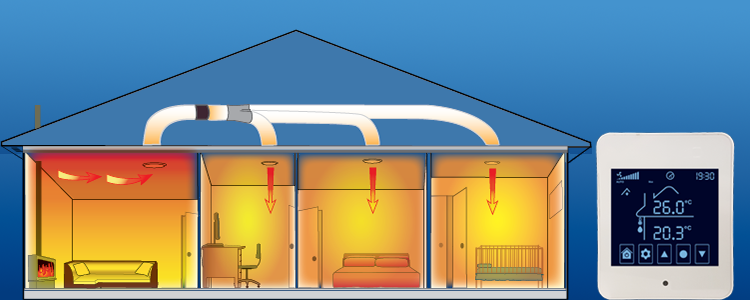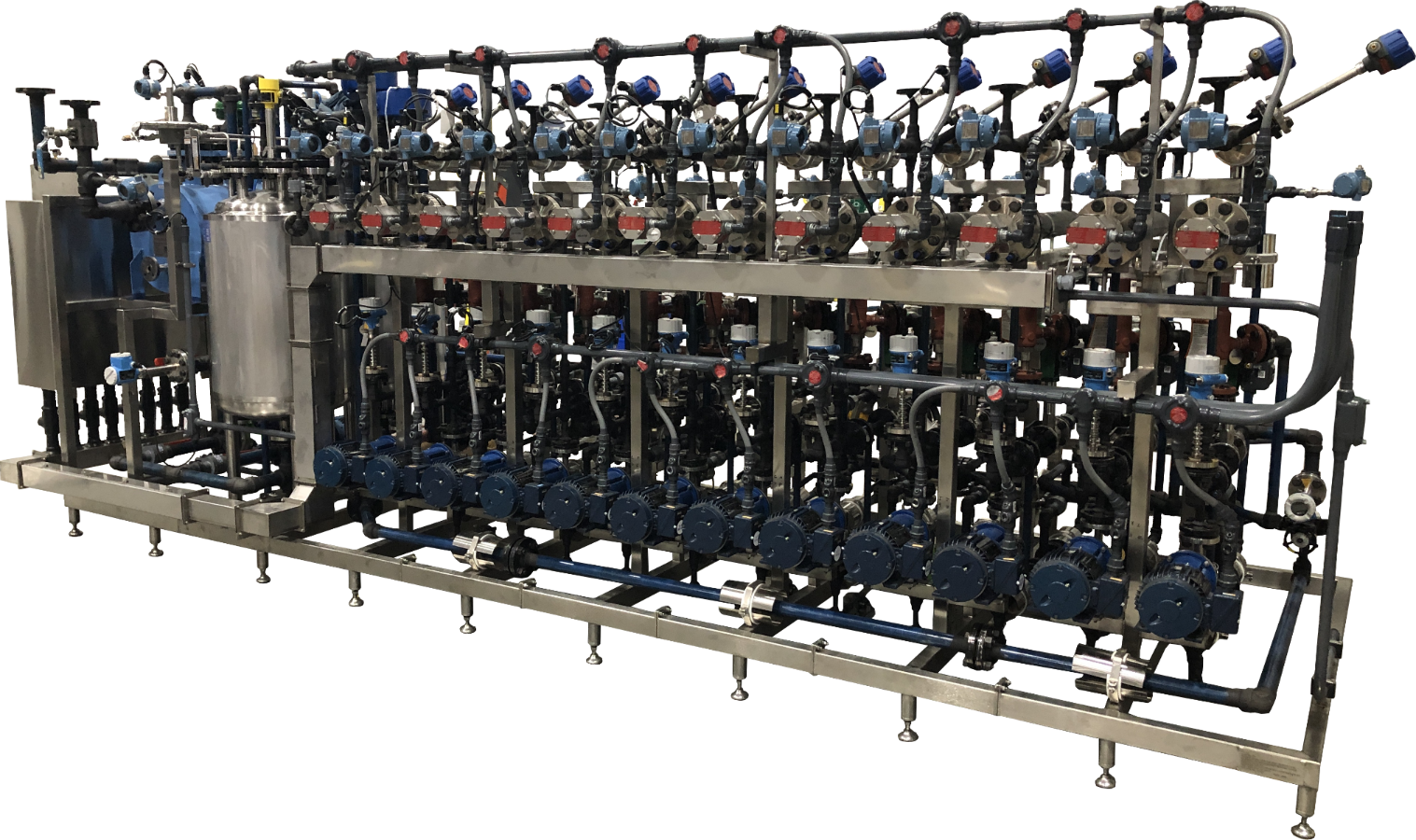Top Trends Shaping the Future of DVS Heat Transfer Systems
Wiki Article
A Comprehensive Guide to Selecting the Right Heat Transfer Equipments for Your Needs
Selecting the appropriate Heat transfer system is important for functional efficiency. Various systems deal with various demands, affected by elements such as temperature level range and liquid kind. Understanding the concepts behind Heat transfer, such as convection, conduction, and radiation, is critical. Additionally, reviewing energy sources and maintenance methods can impact lasting efficiency. A closer evaluation of these factors to consider discloses how to tailor a system to specific needs. What should one prioritize in this complicated decision-making procedure?Understanding Heat Transfer: Secret Principles and Principles
Heat transfer may appear like an uncomplicated concept, it includes an array of principles that are essential for reliable system style - DVS Heat Transfer Systems. Comprehending these concepts is essential for designers and engineers that intend to optimize thermal performance in different applications. Transmission, for circumstances, includes the transfer of Heat with solid materials, while convection refers to the movement of Heat within fluids. Radiation, another key principle, explains exactly how Heat can be transferred with electro-magnetic waves. Each of these mechanisms plays an essential role in establishing just how power moves within a system. By thoroughly grasping these concepts, professionals can make enlightened choices, making sure that Heat transfer systems run successfully and meet the specific needs of their applications
Sorts Of Heat Transfer Systems: An Overview
Understanding the concepts of Heat transfer lays the groundwork for exploring the various sorts of Heat transfer systems available. Heat transfer systems can be classified mainly into 3 kinds: convection, radiation, and transmission. Conduction involves Heat transfer via strong products, relying upon straight call in between particles. Convection, on the other hand, occurs in liquids (gases and liquids) where the activity of the fluid itself promotes Heat transfer. Radiation involves the transfer of Heat through electro-magnetic waves and does not require a tool, allowing it to take place in a vacuum. Each type of system has unique features and applications, making it essential for individuals and companies to meticulously analyze their details needs when picking the most suitable Heat transfer option.Applications of Heat Transfer Solutions in Various Industries
Heat transfer systems play a crucial function throughout different sectors, influencing efficiency and item quality. In industrial manufacturing procedures, they help with exact temperature control, while in food and beverage handling, they assure safety and preservation. In addition, a/c and environment control systems rely heavily on reliable Heat transfer to maintain comfortable settings.Industrial Manufacturing Processes

Countless industrial manufacturing processes rely heavily on reliable Heat transfer systems to optimize efficiency and boost product quality. In markets such as metalworking, Heat exchangers play an important duty in maintaining excellent temperature levels during welding, casting, and forging. These systems guarantee uniform Heat distribution, which is essential for accomplishing wanted product homes. In a similar way, in the chemical production sector, Heat transfer systems promote accurate temperature level control throughout responses, impacting return and safety and security. Moreover, in textile manufacturing, efficient Heat administration is essential for dyeing and completing procedures, affecting shade uniformity and fabric high quality. By selecting suitable Heat transfer innovations, makers can boost power effectiveness and decrease functional costs, inevitably resulting in a more lasting and competitive production environment.
Food and Drink Processing
Reliable Heat transfer systems are equally essential in the food and beverage handling market, where keeping perfect temperatures is essential for food safety and security and quality. These systems play a vital role in procedures such as pasteurization, sanitation, and cooking, guaranteeing that products are secure for usage and retain their nutritional worth. Heat exchangers, for example, effectively move Heat between fluids, enhancing power use while decreasing temperature level variations. Furthermore, refrigeration systems are fundamental for protecting subject to spoiling items and prolonging life span. The option of Heat transfer innovation straight affects operational effectiveness and item integrity, making it necessary for food and beverage producers to pick the appropriate systems tailored to their specific handling requirements. This mindful option ultimately adds to consumer complete satisfaction and food safety.
Heating And Cooling and Environment Control
While several sectors rely on Heat transfer systems for performance, HVAC (Home Heating, Air Flow, and A/c) plays a necessary duty in maintaining indoor climate control throughout numerous setups. These systems utilize Heat transfer concepts to control temperature, air, and moisture quality, making sure comfort and security in residential, commercial, and commercial environments. Properly developed cooling and heating systems boost power efficiency, decrease operational prices, and decrease ecological impact. In commercial structures, for circumstances, effective climate control adds to worker productivity and customer complete satisfaction. In commercial applications, a/c systems aid maintain excellent problems for tools operation and item preservation. Selecting the ideal Heat transfer system is essential for meeting certain climate control needs and accomplishing general system efficiency.Reviewing Power Resources for Heat Transfer Solutions
In reviewing power resources for Heat transfer systems, a comparison of sustainable energy choices and nonrenewable fuel source considerations is crucial. Eco-friendly sources, such as solar and wind, deal sustainable options that can decrease ecological influence. On the other hand, nonrenewable fuel sources remain widespread because of their recognized infrastructure and power thickness, prompting a cautious analysis of both alternatives.Renewable Resource Options

Fossil Fuel Factors To Consider
Examining fossil fuel factors to consider is vital for the effectiveness and view publisher site sustainability of Heat transfer systems. Nonrenewable fuel sources, such as gas, oil, and coal, are conventional power resources that give significant Heat outcome, making them prominent get redirected here options for commercial and domestic applications. However, their ecological influence, including greenhouse gas emissions and source exhaustion, elevates concerns. When picking a warm transfer system, it is essential to examine the accessibility, price, and regulatory aspects associated with these gas. Furthermore, the performance of nonrenewable fuel source systems need to be considered, as greater efficiency can minimize some environmental disadvantages. Inevitably, a balanced technique evaluating efficiency and sustainability can direct decision-makers towards the most suitable Heat transfer option for their details requirements.Aspects to Consider When Selecting a Warm Transfer System
Choosing an ideal Heat transfer system requires careful consideration of numerous aspects that can significantly affect efficiency and performance. One vital variable is the operating temperature variety, which dictates the materials and style ideal for the application. Furthermore, the kind of fluid utilized in the system-- whether gas or fluid-- impacts Heat transfer effectiveness and compatibility. The system's dimension and capacity should straighten with the certain needs of the operation to avoid inadequacies. Power source accessibility is additionally necessary, affecting operating expenses and sustainability. Furthermore, the setup atmosphere, including space constraints and accessibility for maintenance, plays a significant role in system option. Lastly, regulative conformity and safety and security requirements need to be thought about to assure the system fulfills all legal requirements.Maintenance and Efficiency Optimization for Heat Transfer Systems
Keeping Heat transfer systems is vital for guaranteeing optimal effectiveness and long life. Regular maintenance activities, such as cleaning up Heat exchangers and checking insulation, help prevent efficiency losses as a result of fouling and thermal connecting. Furthermore, keeping an eye on system specifications, including stress and temperature, permits very early detection of abnormalities, reducing downtime and pricey repair services. Implementing a preventive upkeep schedule can optimize performance and extend the life-span of elements. Updating to advanced control systems can improve functional efficiency by changing to differing lots and conditions. By focusing on maintenance and efficiency optimization, drivers can achieve decreased power consumption, lower operational prices, and improved overall system integrity, eventually bring about far better source usage and an extra lasting procedure.Future Trends in Heat Transfer Technologies
As sectors significantly focus on sustainability and energy effectiveness, future fads in Heat transfer innovations are readied to undergo considerable transformations. Developments such as advanced materials, consisting of carbon nanotubes and nanofluids, click reference assure enhanced thermal conductivity and effectiveness. In addition, the integration of eco-friendly power resources into Heat transfer systems is obtaining momentum, advertising green remedies. Smart technologies, including IoT sensing units, are expected to revolutionize tracking and control, making it possible for real-time data evaluation for maximized performance. In addition, the growth of modular and compact systems will facilitate simpler installation and upkeep, providing to diverse applications. These improvements suggest a shift towards even more sustainable, effective, and versatile Heat transfer services, straightening with global power goals and environmental requirements.
Often Asked Concerns
What Are the Environmental Effects of Heat Transfer Systems?
The ecological impacts of Heat transfer systems can include greenhouse gas discharges, energy usage, and possible thermal contamination. Additionally, inappropriate disposal of ineffectiveness and materials can add to resource exhaustion and ecosystem interruption.Exactly how Do I Compute the Cost-Effectiveness of a Heat Transfer System?
To determine the cost-effectiveness of a warmth transfer system, one must examine preliminary prices, functional expenses, maintenance needs, and energy effectiveness, contrasting these factors versus the anticipated lifespan and performance of the system.Can Heat Transfer Equipment Be Utilized in Residential Setups?
Heat transfer systems can indeed be made use of in domestic settings. They supply reliable home heating and cooling services, making homes a lot more comfortable while potentially reducing power prices. Their convenience enables different applications in residential environments.What Security Rules Relate To Heat Transfer Equipments?
Safety guidelines for Heat transfer systems commonly consist of guidelines on maintenance, procedure, and installation. Compliance with local building ordinance, manufacturer specs, and market standards is necessary to assure risk-free and effective system performance in numerous applications.How Do Different Products Affect Heat Transfer Effectiveness?

Conduction, for instance, involves the transfer of Heat through solid materials, while convection refers to the motion of Heat within fluids. Recognizing the concepts of Heat transfer lays the groundwork for exploring the numerous types of Heat transfer systems available. Heat exchangers, for circumstances, effectively transfer Heat in between liquids, enhancing power use while decreasing temperature level variations. In reviewing power resources for Heat transfer systems, a contrast of eco-friendly power alternatives and fossil fuel considerations is essential. Metals, such as copper and aluminum, conduct Heat successfully, whereas insulators like rubber and glass reduce down Heat flow.
Report this wiki page